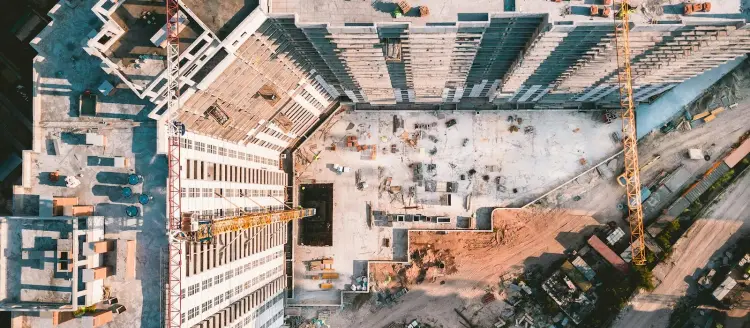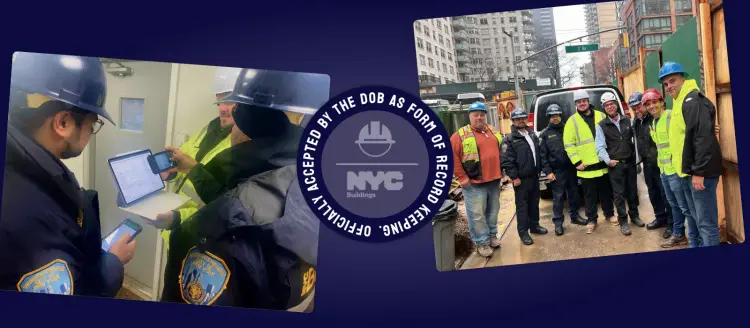Safety Best Practices
Stefano Braganti
Real-Time Workforce Visibility Ends Labor Drift & Rework
Labor drift, rework and schedule slips thrive when you can't see head-count live. Learn how smart turnstiles & dashboards give GCs real-time visibility.

When embarking on a new construction project, worker safety is paramount. Falls, slips, and trips pose significant risks for construction workers. Statistics reveal that in 2020, over 20% of workplace fatalities occurred in the construction industry, accounting for more than 46% of all fatal falls, slips, and trip incidents. A key tool for mitigating these risks is a Site-Specific Safety Plan (SSSP). This blog post delves into what an SSSP is, its vital components, and its importance in ensuring worker safety on construction sites.
An SSSP is a comprehensive, project-specific plan that identifies risks, outlines the scope of work, and details the company's policies and safety practices. The primary goal is to highlight potential hazards and ensure everyone involved in the project is safe. Depending on the construction company, the responsibility of creating the SSSP may fall on the safety director, a designated safety professional, or the general superintendent.
At the onset of a new construction project, the owner or architect may request an SSSP from the construction company. Once the SSSP is created and approved, it's disseminated to everyone who comes to the job site through an orientation process. This procedure ensures all workers are aware of the project scope, potential safety hazards, and protocols to prevent injuries and accidents. If an unforeseen incident occurs during the project, the SSSP can be revised to include any new hazards and proper protocols to ensure site workers' safety.
To create an effective SSSP, various safety practices, policies, controls, and basic project information should be included. Here are some of the key elements of a site-specific safety plan:
Type of project: Details about the project type, including whether it's commercial or infrastructure-based, the total square footage of the building, and the number of floors.
Scope of work: Information about the project's start and end dates, the construction teams onsite, the equipment used, and potentially, a timeline of deliverables.
Contact information: A list of the names and contact numbers of key personnel like the safety director, general contractor, site supervisor, foreman, and project manager.
Project location: The physical address of the project.
Geographic risks: Potential catastrophic events specific to the region, such as hurricanes or floods, should be noted, along with response strategies in case of a natural disaster.
Site drawings with hazard locations: Maps and site drawings that indicate potentially hazardous locations, along with instructions to prevent injuries in or near those areas.
Procedures to avoid hazards: Detailed overview of policies and procedures that workers must follow to avoid accidents and injuries.
Safety check schedule: Details about when safety checks will happen and what will be checked.
Accident investigation process: Details about the process for investigating an accident, which incidents need to be reported, and how workers should report them.
PPE guidelines: Information about the personal protective equipment (PPE) required for workers, including special requirements when operating certain machinery.
First aid locations: Locations of first aid kits and the nearest hospital for emergencies.
Hazard communication plan: Procedures for communicating in case of serious emergencies like chemical spills or natural disasters, including emergency call trees and procedures for accounting for all workers.
While OSHA doesn't always mandate an SSSP for every project, it's required for certain high-risk situations such as handling hazardous substances, hot work, confined spaces, working at heights, or potential exposure to bloodborne pathogens. In addition, OSHA mandates written emergency action plans, fire prevention plans, and hazard communication plans. Creating a written safety training and education program is also highly recommended by OSHA.
A Site-Specific Safety Plan is a vital tool in ensuring safety on a construction site. An effective SSSP identifies potential risks, ensures everyone on the job site understands the safety procedures, and provides situational protocols for emergencies. It is essential that the SSSP is kept updated and shared with all project stakeholders before work begins, promoting a safety-conscious environment for everyone involved.
Remember, using construction software to create and manage your SSSP can simplify the process, ensure real-time updates, and provide easy access for everyone involved, making it a valuable tool for improving job site safety.
Please note, the specific contents of an SSSP can vary greatly depending on local regulations and the nature of the construction project. Always consult with a safety professional or local authority when developing an SSSP.

Risk Manager with 10+ years of experience in the construction industry. Passionate supporter of the NFL's New York Giants.
Safety Best Practices
Stefano Braganti
Labor drift, rework and schedule slips thrive when you can't see head-count live. Learn how smart turnstiles & dashboards give GCs real-time visibility.

Safety Best Practices
Stefano Braganti
Stop-Work Orders crush margins. Digital safety dashboards catch risks early, prevent claims, and protect your 3% fee.

Safety Best Practices
Stefano Braganti
NYC DOB formalizes digital record-keeping: what the bulletin says, why it matters, and how SafetyClerk helped make it happen.

together
SafetyClerk is the construction management platform that makes safety compliance, and risk management of your job site simple and visible in one click.
Stay on
the loop!
ConstructionClerk - 2026 - All rights reserved
ConstructionClerk - 2026 - All rights reserved